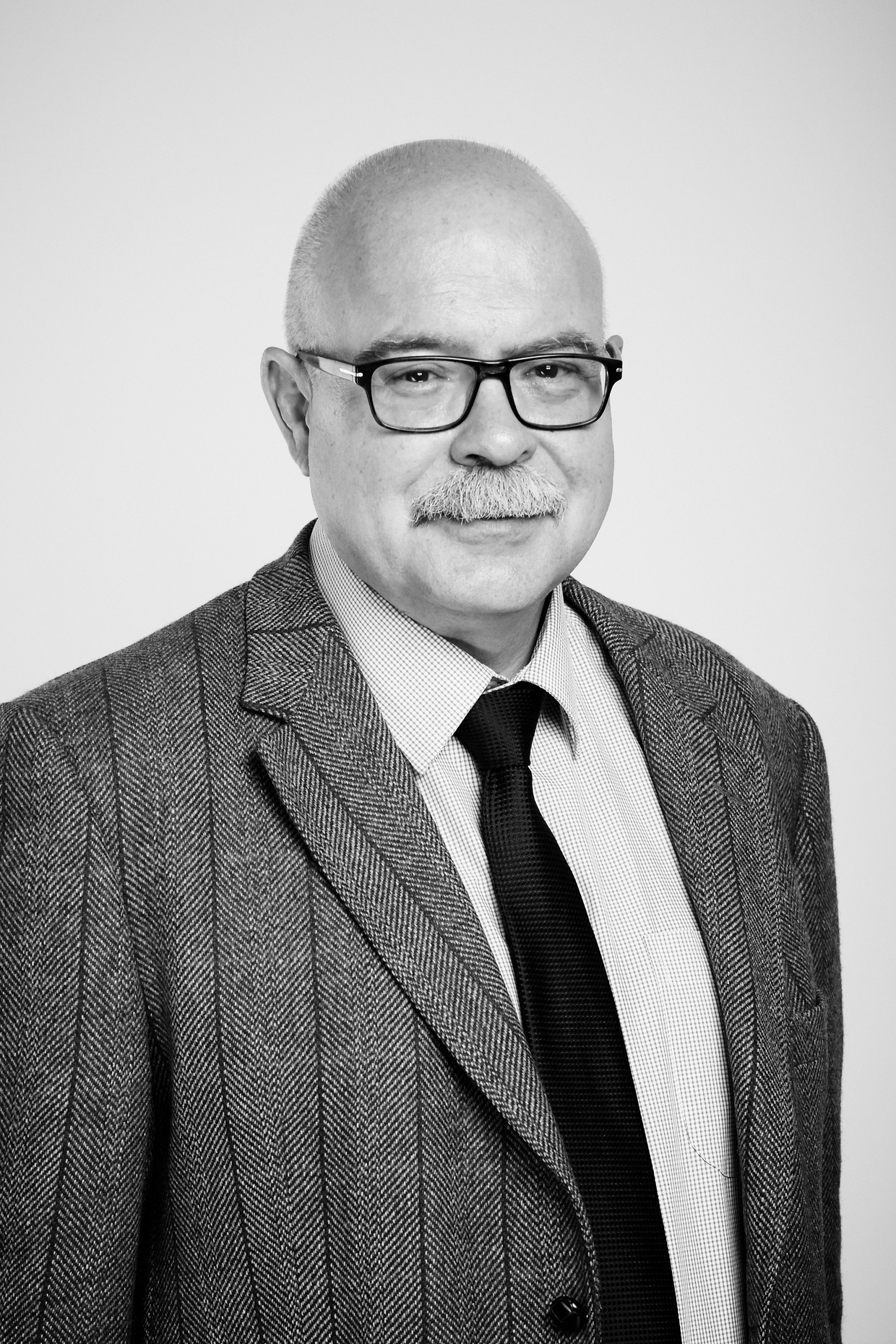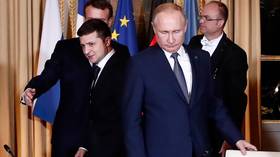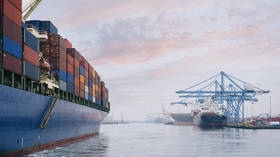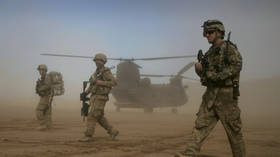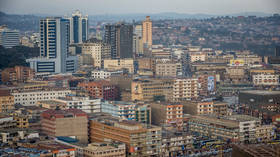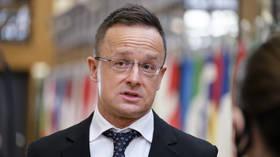Dmitry Trenin: Six months into the conflict, what exactly does Russia hope to achieve in Ukraine?
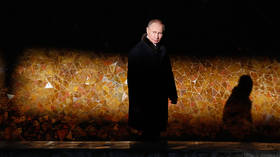
Last week, Russian President Vladimir Putin referred to Ukraine as an “anti-Russian enclave” which has to be removed. He also said that the Russian soldiers taking part in the military operation there were fighting for their “own country.” These statements carry important implications.
Over the last six-plus months, the mantra of the Russian officialdom has been that all aims of the offensive will be reached. On purpose, however, the specific objectives, such as how far Moscow’s forces plan move into Ukraine, have never been spelled out. This cannot but raise speculation about what the Kremlin is actually hoping to achieve.
The only person who can authoritatively answer that question, however, is the president, and second-guessing him makes no sense. Yet, two things cannot escape close attention. One is the radicalization of Moscow’s position on Ukraine as a result of both Western policies and Kiev’s actions; two is the widening gap between the minimum result of the military campaign that Russia can be satisfied with, and the maximum amount of what the US and its allies can accept.
For about six years after the second Minsk Agreement was signed in 2015, the Kremlin tried hard to get that accord implemented. It would have ensured the autonomous status of Donbass within Ukraine and given the region influence on national politics and policies, including in the issue of the country’s geopolitical and geo-economic orientation. From the very start, however, Kiev was unwilling to cooperate on the deal’s implementation, seeing it as a win for Moscow. Washington, in pursuit of a policy to contain Russia, encouraged such an obstructionist stance, while Berlin and Paris, formally the guarantors of the agreement (alongside Russia), had no leverage in Kiev and ended up embracing the Ukrainian position.
Vladimir Zelensky’s election to Ukraine’s presidency in 2019 initially appeared to be an opening for peace, and President Putin made a serious effort to get the Minsk agreement off the ground. Kiev, however, soon backtracked and took an even more hardline position than before. Nevertheless, until mid-2021 the Kremlin continued to see as its goals in Ukraine a resolution of the Donbass issue essentially on the basis of Minsk, and the eventual de facto recognition of Crimea’s Russian status. In June of last year, Vladimir Putin, however, published a long article on Russian-Ukrainian relations which made it clear that he viewed the current situation as a major security, political, and identity issue for his country; recognized his personal responsibility; and was resolved to do something to strategically correct it. The article did not give away Putin’s game plan, but it laid out his basic thinking on Ukraine.
Last December, Moscow passed on to Washington a package of proposals, which amounted to a list of security guarantees for Russia. These included Ukraine’s formal neutrality between Russia and NATO (“no Ukraine in NATO”); and no deployment of US and other NATO weapons and military bases in Ukraine, as well as a ban on military exercises on Ukrainian territory (“no NATO in Ukraine”). While the US agreed to discuss some military technical issues dealt with in the Russian paper it rejected Moscow’s key demands related to Ukraine and NATO. Putin had to take no for an answer.
Just before the launch of its military operation, Moscow recognized the two Donbass republics and told Kiev to vacate the parts of Donetsk and Lugansk then under Ukrainian control – or face the consequences. Kiev refused, and hostilities began. Russia’s official reason for unleashing force was defending the two newly recognized republics which had asked for military assistance.
Shortly after the start of hostilities Russia and Ukraine began peace talks. In late March 2022 at a meeting in Istanbul, Moscow demanded that Zelensky’s government recognize the sovereignty of the two Donbass republics within their constitutional borders, as well as Russia’s own sovereignty over Crimea, which was formally incorporated into the Russian Federation in 2014, plus accept a neutral and demilitarized status for territory controlled by Kiev. At that point, Moscow still recognized the current Ukrainian authorities and was prepared to deal with them directly. For its part, Kiev initially appeared ready to accept Moscow’s demands (which were criticized by many within Russia as overly concessionary to Ukraine), but then quickly reverted to a hardline stance. Moscow has always suspected that this U-turn, as on previous occasions, was the result of US behind-the-scenes influence, often aided by the British and other allies.
From the spring of 2022, as the fighting continued, Moscow expanded its aims. These now included the “de-Nazification” of Ukraine, meaning not only the removal of ultra-nationalist and anti-Russian elements from the Ukrainian government (increasingly characterized by Russian officials now as the “Kiev regime”), but the extirpation of their underlying ideology (based around the World War Two Nazi collaborator Stepan Bandera) and its influence in society, including in education, the media, culture and other spheres.
Next to this, Moscow added something that Putin called, in his trademark caustic way, the “de-Communization” of Ukraine, meaning ridding that country, whose leadership was rejecting its Soviet past, of the Russian-populated or Russian-speaking territories that had been awarded to the Soviet Ukrainian republic of the USSR by the Communist leaders in Moscow, Vladimir Lenin, Joseph Stalin and Nikita Khrushchev. These include, besides Donbass, the entire southeast of Ukraine, from Kharkov to Odessa.
This change of policy led to dropping the early signals about Russia honoring Ukraine’s statehood outside Donbass, and to establishing Russian military government bodies in the territory seized by the Russian forces. Immediately following that, a drive started to de facto integrate these territories with Moscow. By the early fall of 2022, all of Kherson, much of Zaporozhye and part of Kharkov oblasts were being drawn into the Russian economic system; started to use the Russian ruble; adopted the Russian education system; and their population was offered a fast-track way to Russian citizenship.
As the fighting in Ukraine quickly became a proxy war between Russia and the US-led West, Russia’s views on Ukraine’s future radicalized further. While a quick cessation of hostilities and a peace settlement on Russian terms in the spring would have left Ukraine, minus Donbass, demilitarized and outside NATO, but otherwise under the present leadership with its virulently anti-Russian ideology and reliance on the West, the new thinking, as Putin’s remarks in Kaliningrad suggest, tends to regard any Ukrainian state that is not fully and securely cleansed of ultranationalist ideology and its agents as a clear and present danger; in fact, a ticking bomb right on Russia’s borders not far from its capital.
Under these circumstances, in view of all the losses and hardships sustained, it would not suffice that Russia wins control of what was once known as Novorossiya, the northern coast of the Black Sea all the way to Transnistria. This would mean that Ukraine would be completely cut off from the sea, and Russia would gain – via referenda, it is assumed – a large swath of territory and millions of new citizens. To reach that objective, of course, the Russian forces still need to seize Nikolaev and Odessa in the south, as well as Kharkov in the east. A logical next step would be to expand Russian control to all of Ukraine east of the Dnieper River, as well as the city of Kiev that lies mostly on the right bank. If this were to happen, the Ukrainian state would shrink to the central and western regions of the country.
Neither of these outcomes, however, deals with the fundamental problem that Putin has highlighted, that is to say, of Russia having to live side-by-side with a state that will constantly seek revenge and will be used by the United States, which arms and directs it, in its effort to threaten and weaken Russia. This is the main reason behind the argument for taking over the entire territory of Ukraine to the Polish border. However, integrating central and western Ukraine into Russia would be exceedingly difficult, while trying to build a Ukrainian buffer state controlled by Russia would be a major drain on resources, as well as a constant headache. No wonder that some in Moscow would not mind if Poland were to absorb western Ukraine within some form of a common political entity which, Russia’s foreign intelligence claims, is being surreptitiously created.
Ukraine’s future will not be dictated, of course, by someone’s wishes, but by the actual developments on the battlefield. Fighting there will continue for some time, and the final outcome is not in sight. Even when the active phase of the conflict comes to an end, it is unlikely to be followed up by a peace settlement. For different reasons, each side regards the conflict as existential – and much wider than Ukraine. This means that what Russia aims for has to be won and then held firmly.
